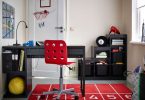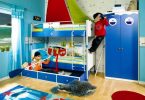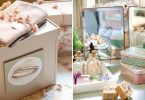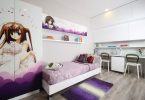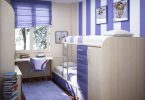A successfully planned children’s room is the right step towards the healthy development of a child, because, having a personal space, beautiful and functional, he will be able to relax, play and be creative in his own, unique, world.
Today we have not in vain turned to the topic of planning a children’s room, as we consider it one of the most difficult and delicate. After all, the well-being, mood and success of your children will depend on how competently the children’s environment is designed..
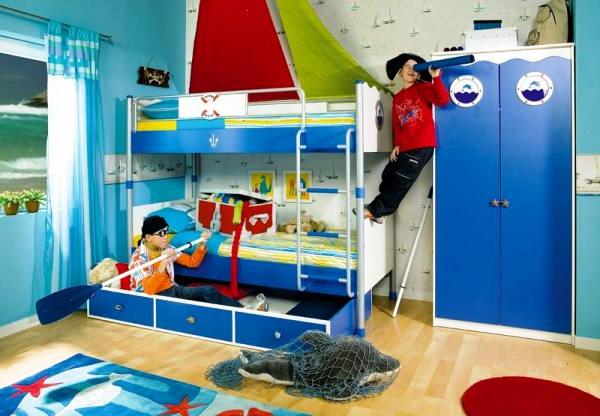
children’s room
If the nursery area is not used with maximum benefit, the furniture is arranged in random order, and the gamut of colors is dull, it will be difficult to see the enthusiasm and craving for classes in the eyes of the child, because children perceive the environment intuitively and act on the basis of what was received, on a subconscious level, information.
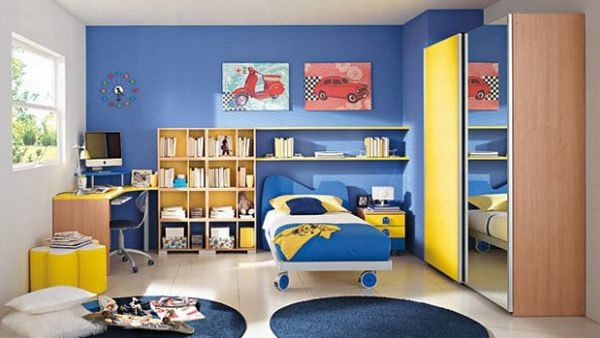
Children’s room
We deliberately divided the text of the article into three main points according to age categories – from birth to 10 years. Each of them, in turn, is divided into subparagraphs that tell about the main components of the layout of the children’s room.
How to plan a room for a toddler up to 3 years old
Before the baby is born, you have enough time to come to grips with the search for the necessary facing materials for decorating the nursery, as well as the search for furniture and accessories. But, also, you should calculate how all this will be located so that the baby feels comfortable.
Zoning
At such a tender age, a child, first of all, needs to feel your love and care, be warm, and receive a sufficient amount of daylight. Since the newborn baby spends most of the time in his crib, it is necessary to install it in the lightest area of the room, ideally near the window. In this case, a certain distance from the battery should be observed, and the crib should not be placed on a line «window-door», drafted.
The rest of the filling of the baby’s room can be located freely, with convenience for parents (a chair in the corner, a chest of drawers for things near the wall).
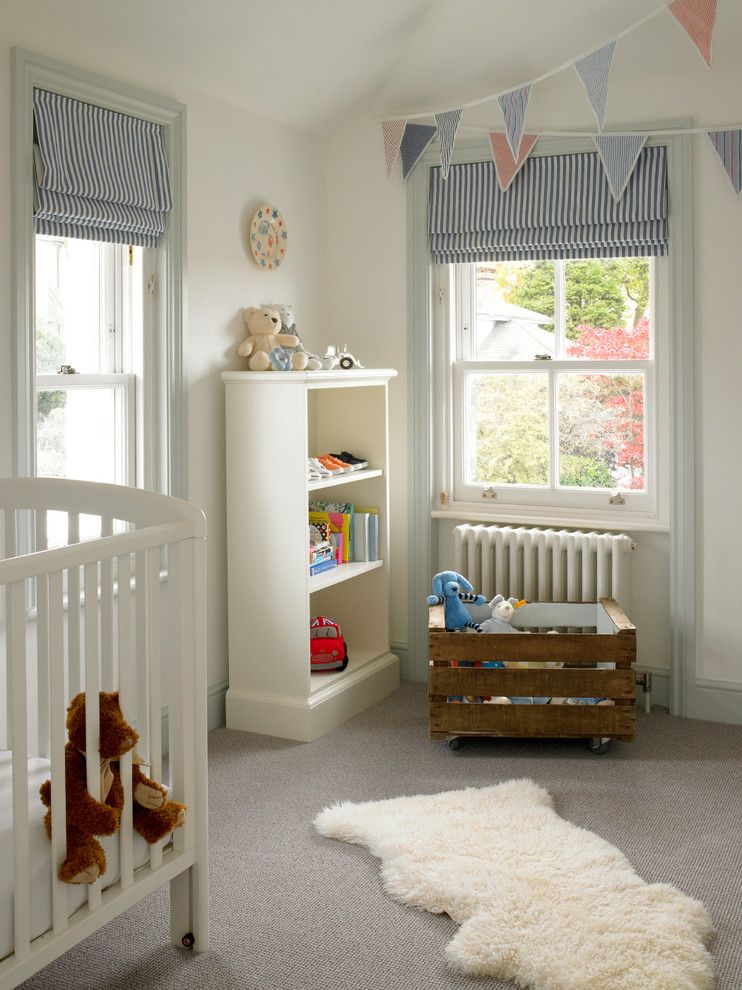
Children’s room
Color spectrum
It is extremely impractical to paste over the walls with expensive wallpaper or order a painting with a specific plot when the child is still so small. Two or three years will pass and the walls will probably be covered with the creativity of your baby: traces of markers, paints, stained palms. Therefore, we recommend, for a start, to paste over the walls with plain wallpaper for painting, which you will not mind replacing in the future with a more expensive cladding option»
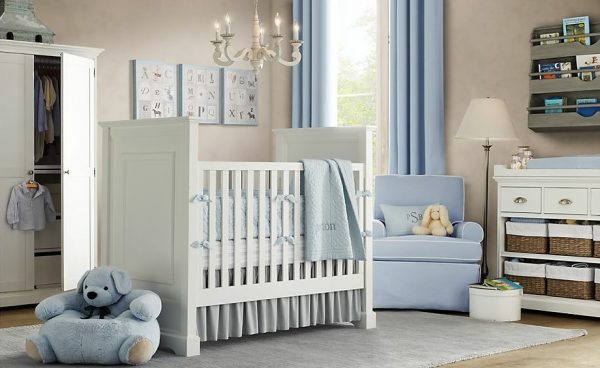
Children’s room
As for the choice of color, it is better to use light neutral shades (cream, light gray, sand), pastel warm or cold colors (vanilla, pale green, mint, blue) in a baby’s room up to three years old. This range is considered optimal for a baby’s room, since it does not distract from the game process, does not irritate, and pacifies. And a neutral background is the best when bright accessories and toys are used in the room..
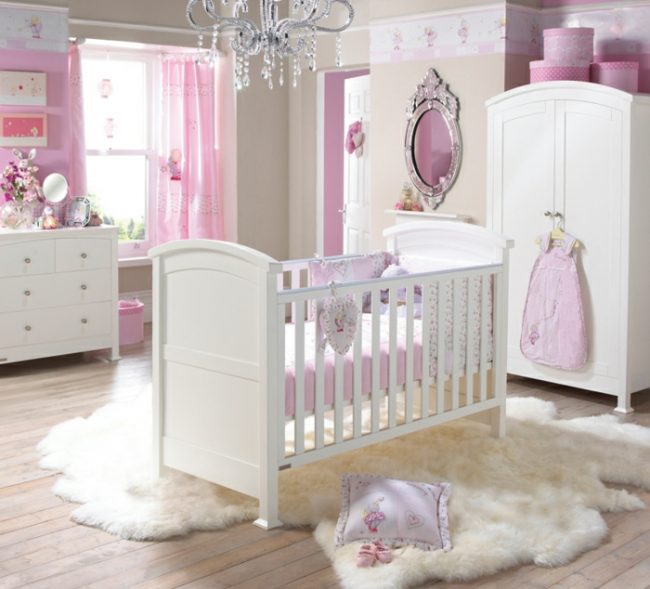
Children’s room
Necessary furniture
With pieces of furniture, everything is as simple here: a cot, a changing table (it is better if it is combined with a chest of drawers for a child’s belongings), a comfortable chair or mini-sofa for parents, a floor rack for toys.
You can supplement such a set at will: baskets for storing toys, a compact wardrobe, a table and a chair, a children’s bench. It all depends on the size of the room and the main pieces of furniture..
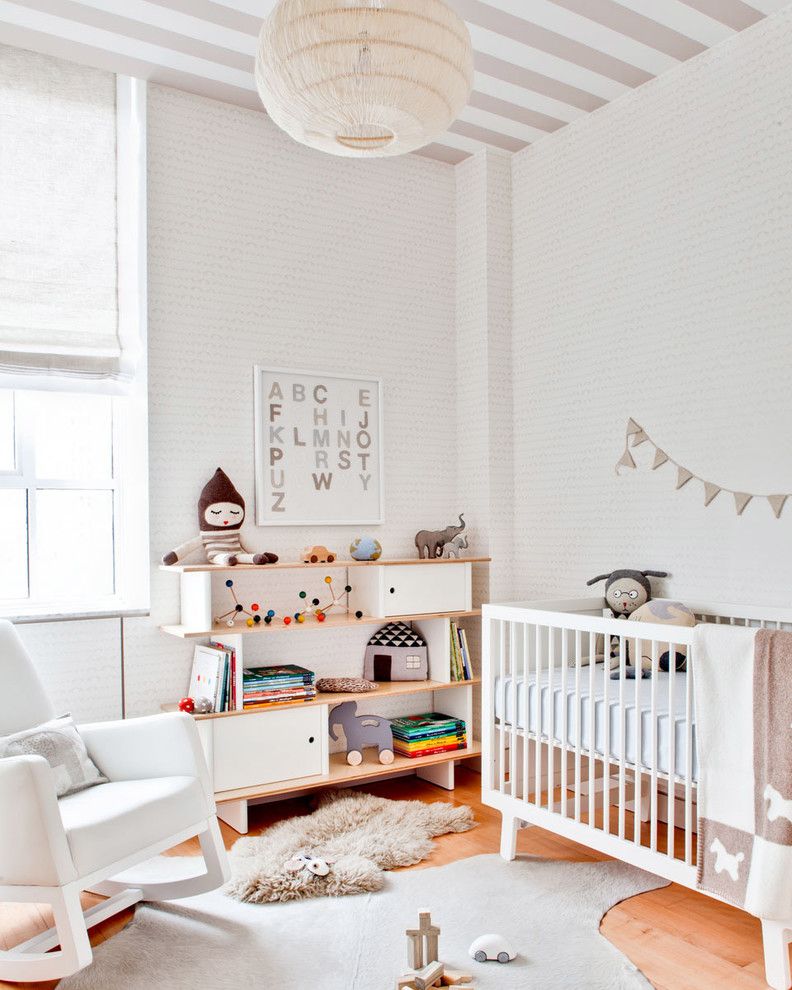
Children’s room
Lighting
A small child needs light and is important, and its lack can affect health. On the other hand, the kid still does not know how to write and read, does not spend a lot of time at the desk. Therefore, the main and high-quality should be daylight and flooding artificial light, therefore, it is better to arrange the window with the help of light, translucent functional curtains that let in the sun’s rays, and hang a chandelier under the ceiling, emitting bright, warm yellowish light.
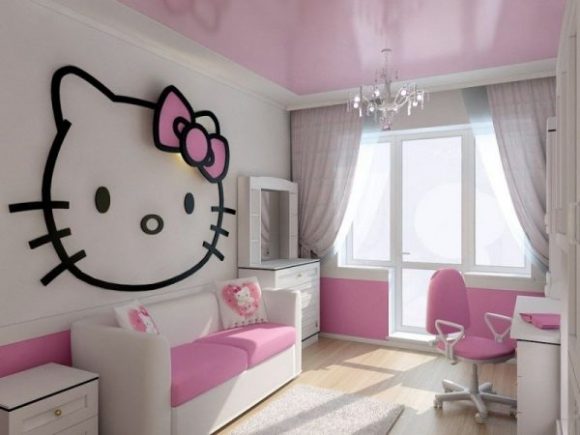
Children’s room
Remember the need for a decorative night lamp, which will create a cozy atmosphere in the evening and help the child to fall asleep.
We plan a room for a child from 3 to 6 years old
The kid has grown up, and he has new needs: to learn about the world, and to prove himself in the game or creativity.
Zoning
From now on, the bed will only serve as a place to rest, so it can be placed in the place farthest from the window. The play area (carpet and children’s table with a chair) should be brought closer to it, since assembling and disassembling the parts of the designer requires efforts and strain of the forming vision.
The third area is the area where the storage space for things and toys is located. By the way, in small rooms it is better to use modular systems that can be easily built into niches, openings and other unoccupied recesses in the room..
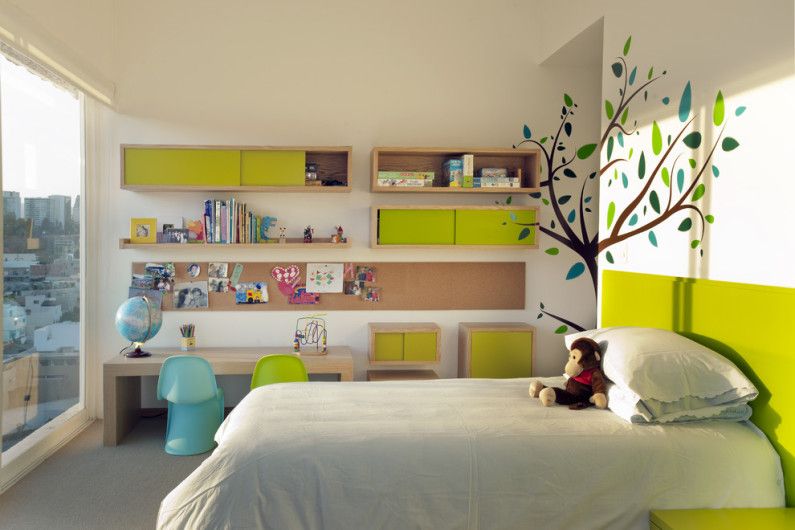
Children’s room
Color spectrum
At preschool age, children actively develop their imagination, taste and hobbies. But, along with this, their craving for one color can be replaced by an addiction to the opposite, because specific preferences will be formed for a long time..
In this regard, it is recommended to use all the same neutral colors in the design of the preschooler’s room, but combine one with the other, and complement with patterns using stencils, an oracle.
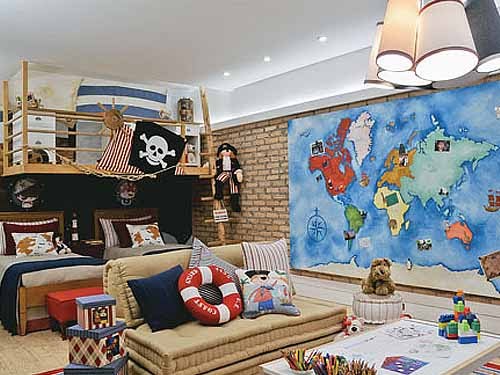
Children’s room
Age under 6 years old is the time to develop a sense of harmony in the child. Ask the child about what colors he wants to see in his room, and act on this basis. Even if the little daughter today prefers caramel pink shades, they can be used in the decoration of the walls, but must be supplemented with light elegant tones (white, ivory, lemon cream, silver gray, pale green and powdery).
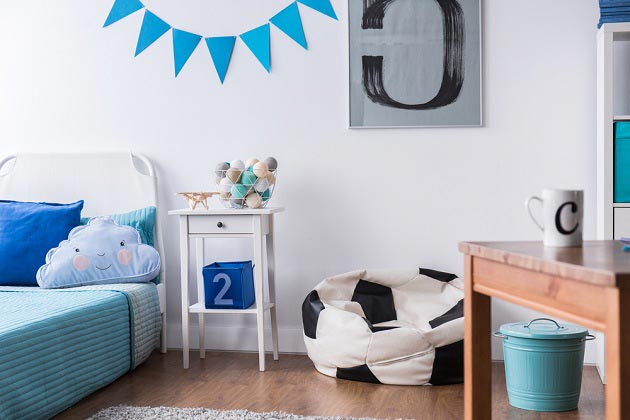
Children’s room
When the child grows up, the pastel range, sustained, thanks to the harmony of color and shade combinations, will be just as appropriate.
Find a compromise: invite the child to paint the walls in neutral basic tones, and let him choose the colors of the accessories.
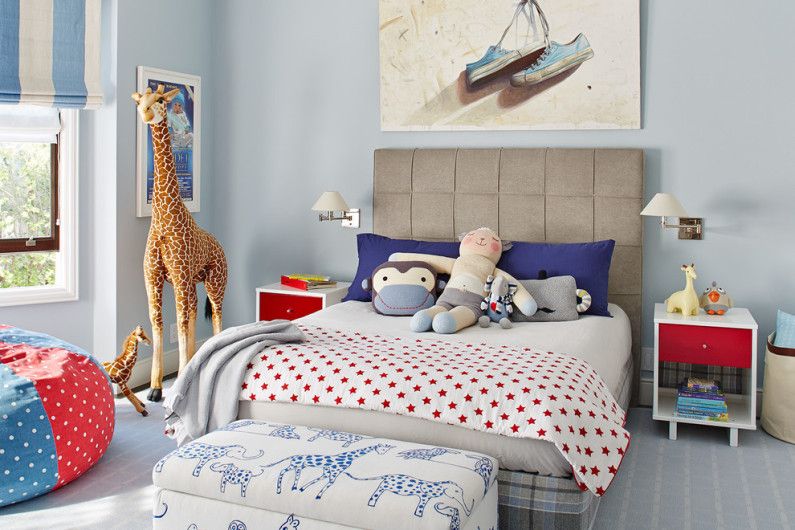
Children’s room
Necessary furniture
Growing up, children become more diligent, and already spend more time creating and doing activities (they learn the alphabet and numbers, solve simple problems, draw and sculpt, collect parts). Therefore, you should take the time to find an ergonomic desk and chair, shelves for office supplies, a built-in book rack..
When the child reaches 3 years of age, the bed must be replaced by installing a more spacious bed instead of the nursery.
When a room is designed for two children, bunk structures, as well as integrated furniture, are a great way to save space. To store things, in this case, it is better to use two small dressers for each of the children than to install one, but bulky wardrobe.
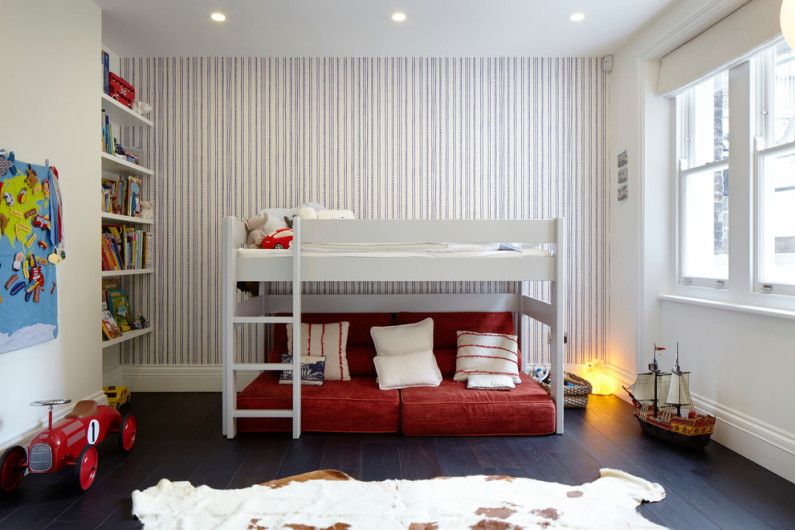
Children’s room
Lighting
The main flood light now simply needs to be supplemented with the required number of table lamps on stable supports so that sitting at the table does not affect vision and posture deterioration. Decorative lamps (sconces and bedside lamps) should also be present in the preschooler’s room, because a child at this age can see shadows, sounds and rustles, and soft light should calm.
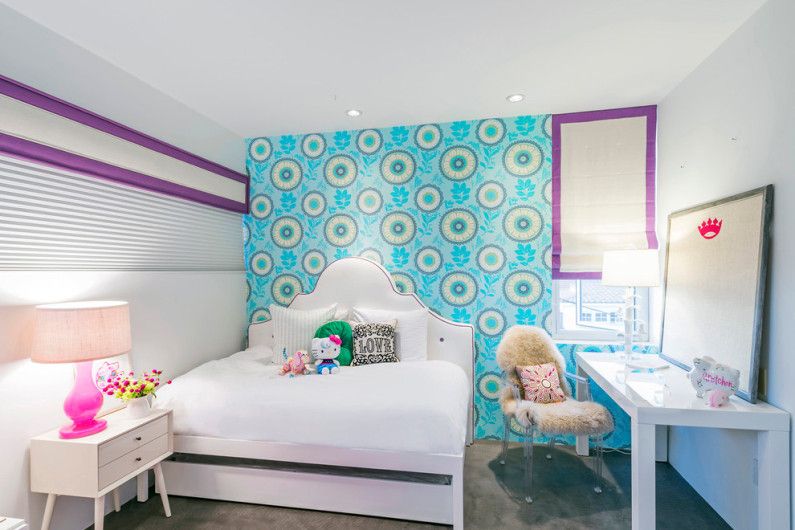
Children’s room
Children’s layout for a child from 6 to 10 years old
Zoning
It is necessary to clearly distinguish between the rest area (bed) and the working area (table and chair). The second must be located in the lightest part of the room.
Advice: Instead of using a free-standing table and shelving, it is better to order a structure that will combine everything you need for study and creativity, while taking up significantly less space.
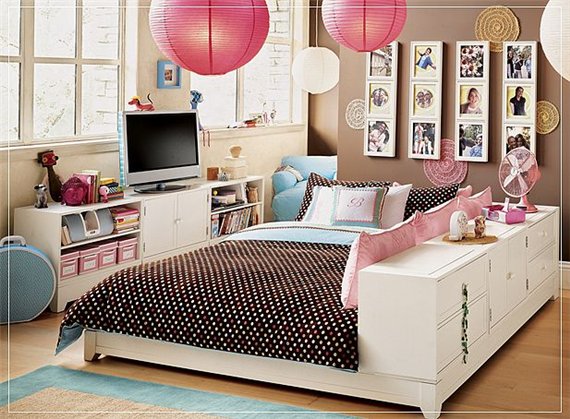
Children’s room
How the free space can be used depends on how well the furniture is selected and placed in the nursery space. For example, if a girl is engaged in gymnastics or ballet, you can find a place near the wall for mounting a mirror and a barn, if instead of free-standing objects you install a two-tier structure (bed + work area).
In the boy’s room, the same way to allow you to install a Swedish wall or a podium for practicing with musical instruments.
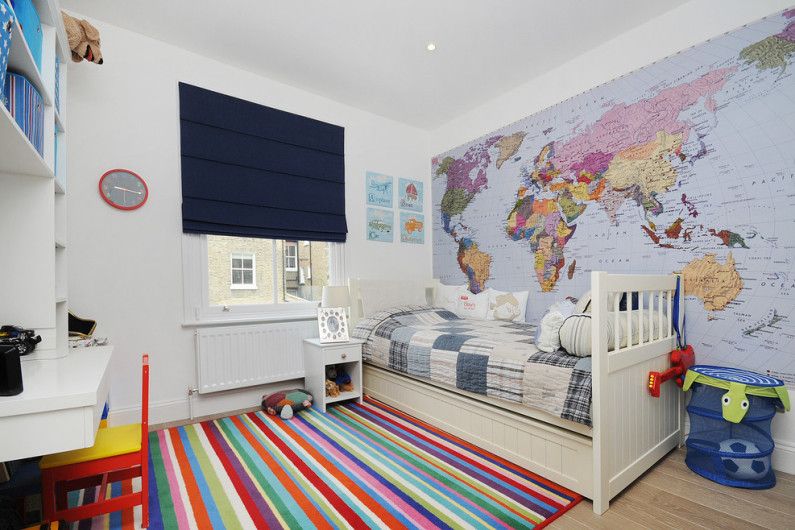
Children’s room
Color spectrum
Having matured, children are able to determine for themselves which colors they like and which ones are better to refuse. Therefore, when planning a room for a student, ask for his opinion – this will greatly facilitate your task, and speed up the process of decorating surfaces..
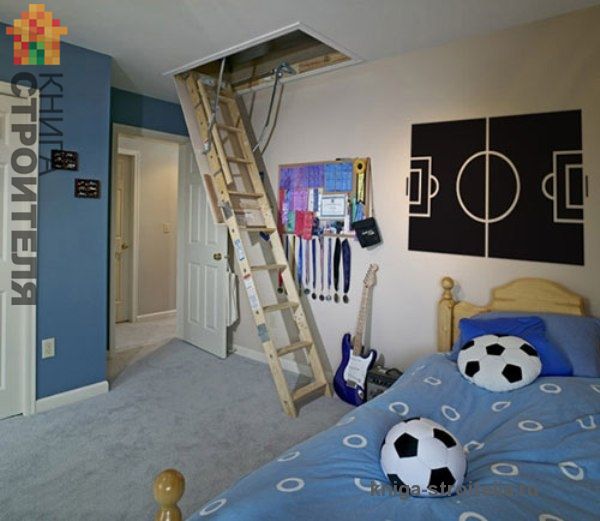
Children’s room
It is noteworthy that under the age of 10, boys tend to choose pure colors and monochromatic textures for their room, and girls prefer patterns and prints, combined with natural shades..

Children’s room
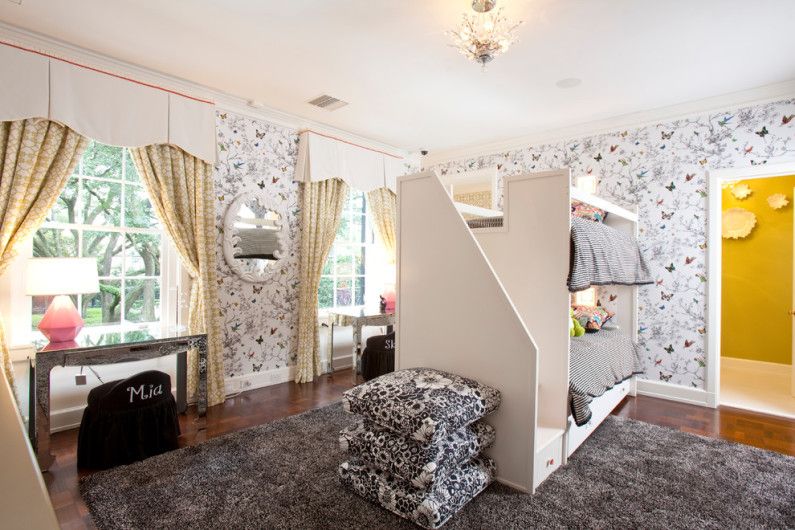
Children’s room
Necessary furniture
A child’s room from 6 years old should have a comfortable bed, a functional writing desk with compartments for office supplies, a rack, a bookcase or shelves for books and some toys. Also, you need a storage system for things and accessories for creativity (music, sports).
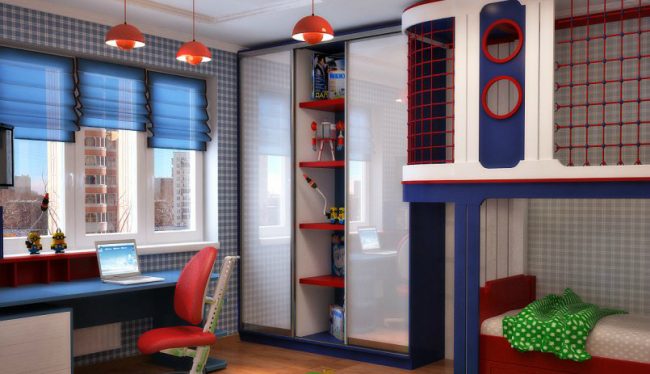
Children’s room
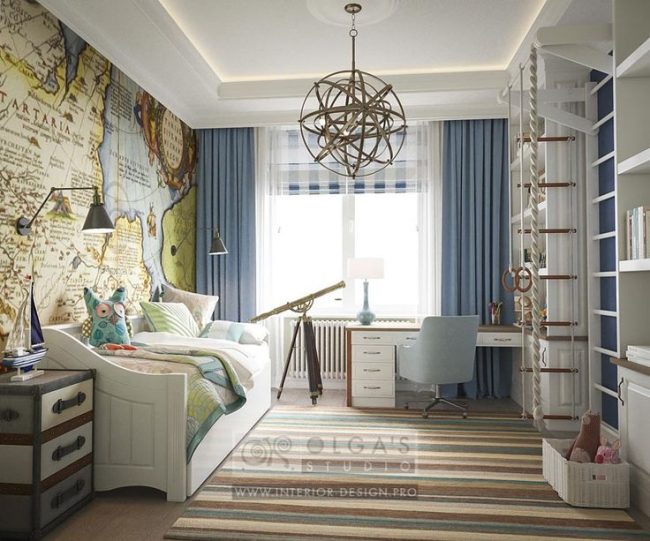
Children’s room
Use the area of the room with maximum benefit, counting every half a meter: in a niche, you can mount a closed rack, or a wardrobe, place a chest of drawers in the gap between the bed and the table. If the room is small, it is especially important not to leave unnecessary «clearances» between objects – this is not practical and consumes useful space.
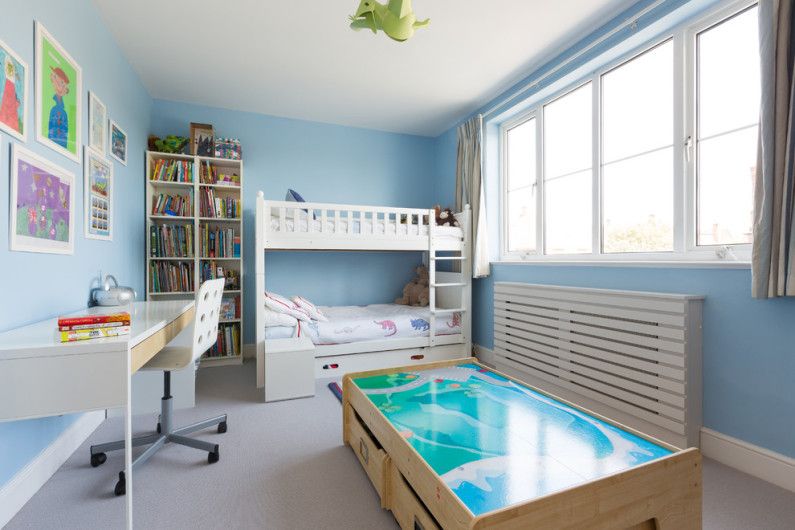
Children’s room
Lighting
The need for high-quality lighting is a permanent condition in the competent planning of a children’s room, especially if two children live in it. The general overhead light should be bright enough, but the quality of the work lights is more important. They are required for the tables of each of the children..
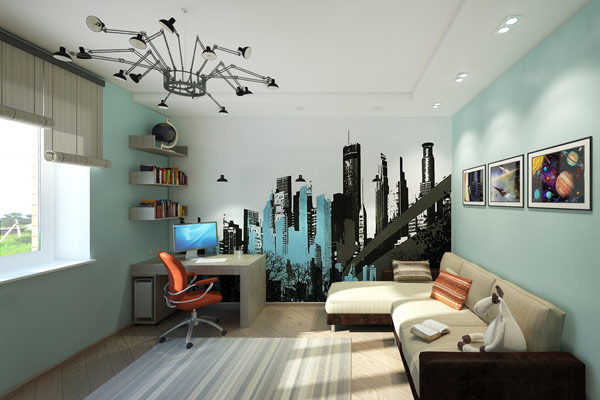
Children’s room
Decorative lamps and sconces can now be replaced with a floor lamp, which does not require installation, and can be moved as needed, and an adult child will be more aware of such a thing, without fear of overturning it.
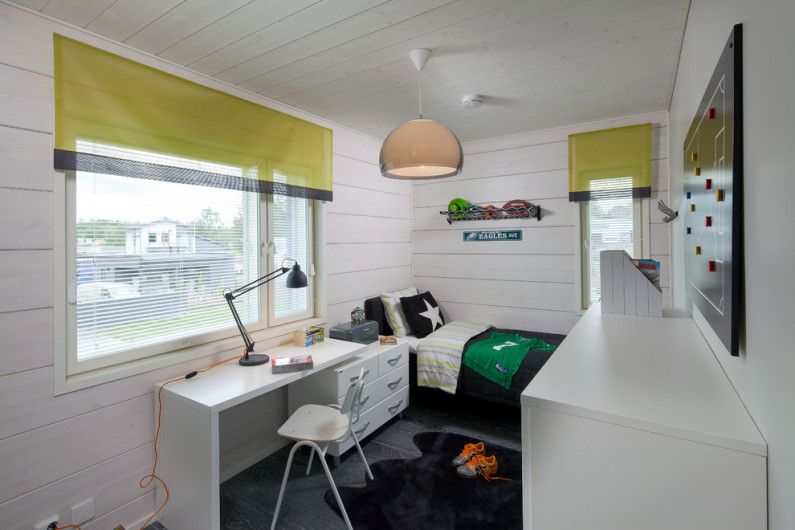
Children’s room
Planning the space of any room is an interesting process, sometimes providing us with many surprises. But the children’s room is special, working with it captures and inspires, briefly returning us to childhood.
We wish you good luck in creating comfortable conditions in the interior of the nursery.!

